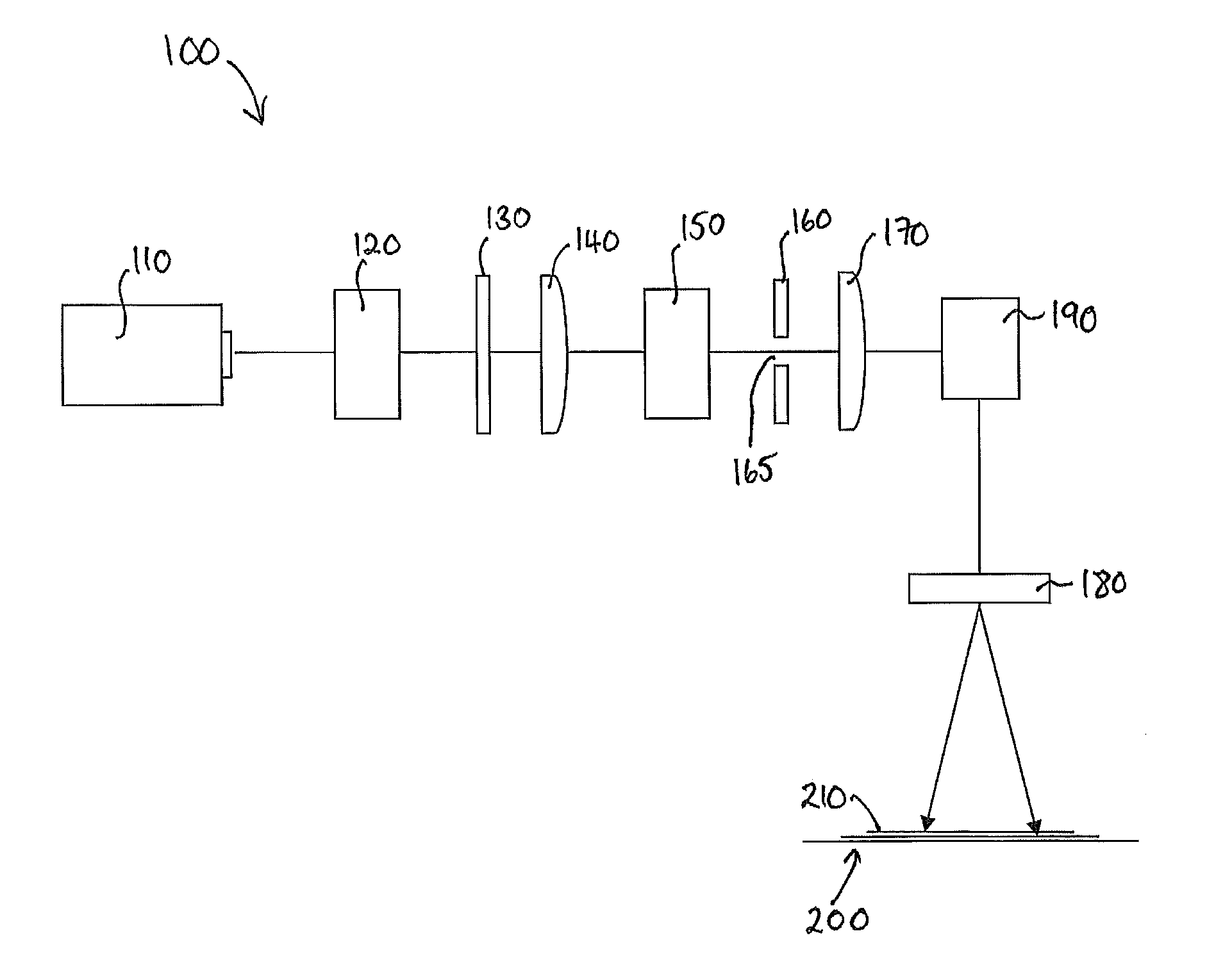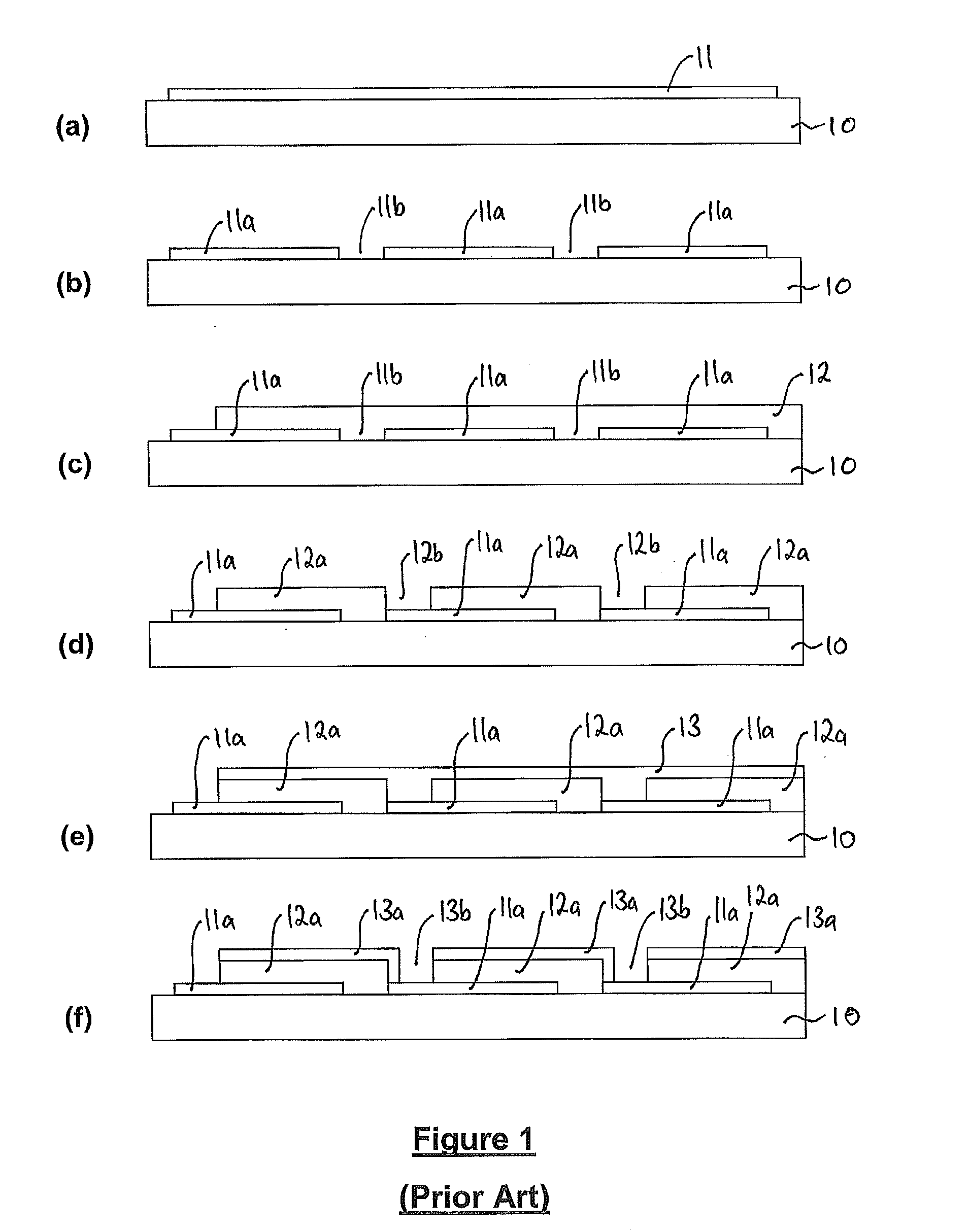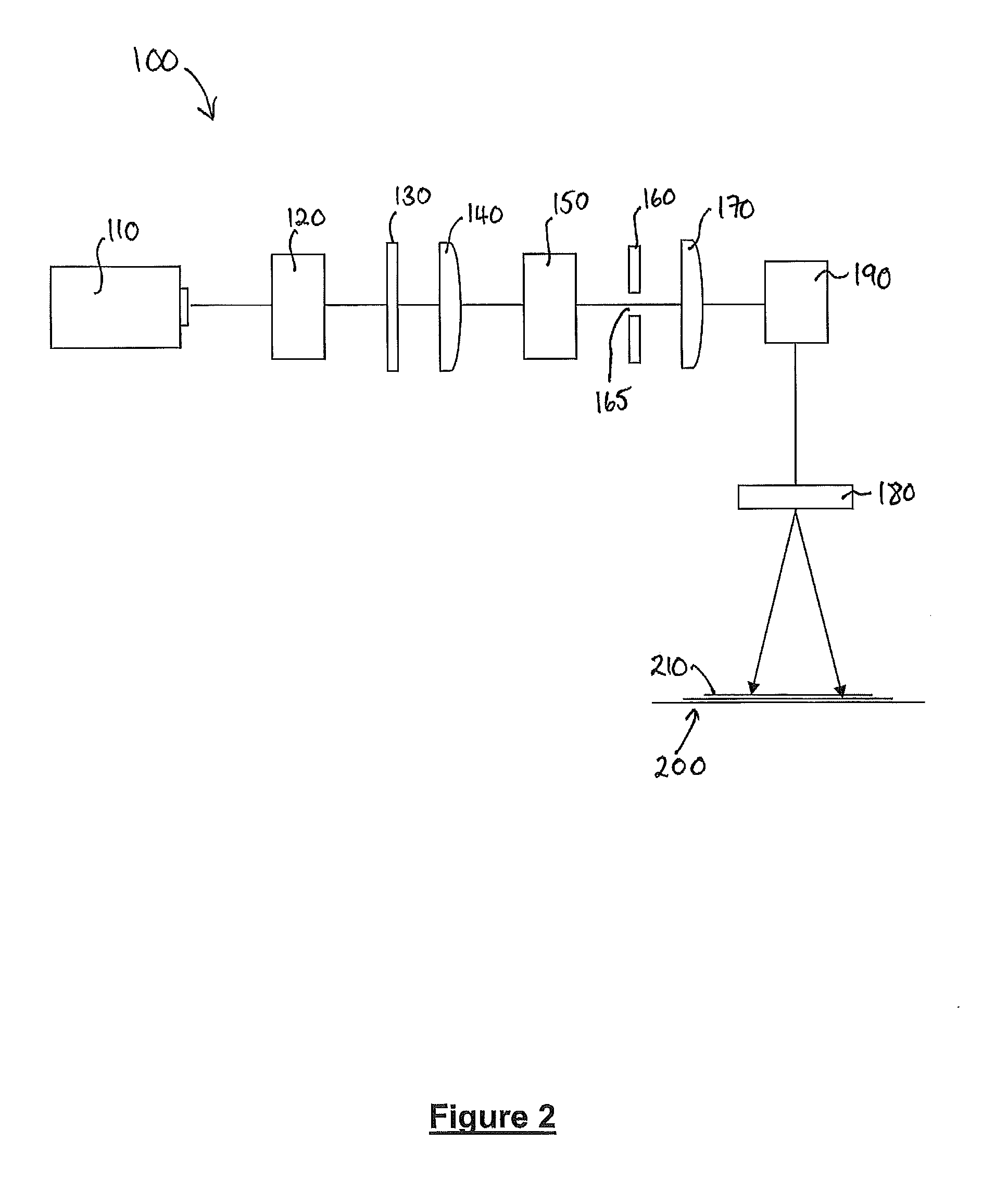Methods and Apparatus For Patterning Photovoltaic Devices and Materials For Use With Such Devices
a photovoltaic device and patterning technology, applied in the direction of manufacturing tools, nuclear engineering, therapy, etc., can solve the problems of reducing the effective area, generating unacceptable resistive losses in relatively thin conductive films, and reducing the current flowing in each device, so as to improve the scribing
- Summary
- Abstract
- Description
- Claims
- Application Information
AI Technical Summary
Benefits of technology
Problems solved by technology
Method used
Image
Examples
Embodiment Construction
[0093]Referring to FIG. 2 of the drawings, there is illustrated a laser beam shaping assembly 100 according to a first embodiment of the present invention for shaping a picosecond laser beam which is used to pattern a photovoltaic devices 200 (e.g., scribe thin film photovoltaic devices), including patterning regions comprising amorphous silicon (a-Si), silicon nitride, silicon oxide or cadmium telluride. The assembly 100 comprises an ultrafast fibre laser, which is arranged to generate laser pulses with a pulse repetition frequency in the range of 10 kHz to 100 MHz and more preferably 100 kHz to 500 kHz. The laser may comprise a diode-pumped ultrafast master oscillator fibre power amplifier (UFMOFPA) 110, or alternatively a diode-pumped flexible ultrafast master oscillator fibre power amplifier, both of which are arranged to generate a fundamental laser wavelength in the range 0.2 μm to 1.6 μm and most preferably substantially 1 μm, and picoseconds laser pulses with a pulse within ...
PUM
| Property | Measurement | Unit |
|---|---|---|
| wavelength | aaaaa | aaaaa |
| laser wavelength | aaaaa | aaaaa |
| laser wavelength | aaaaa | aaaaa |
Abstract
Description
Claims
Application Information
 Login to View More
Login to View More - R&D
- Intellectual Property
- Life Sciences
- Materials
- Tech Scout
- Unparalleled Data Quality
- Higher Quality Content
- 60% Fewer Hallucinations
Browse by: Latest US Patents, China's latest patents, Technical Efficacy Thesaurus, Application Domain, Technology Topic, Popular Technical Reports.
© 2025 PatSnap. All rights reserved.Legal|Privacy policy|Modern Slavery Act Transparency Statement|Sitemap|About US| Contact US: help@patsnap.com



